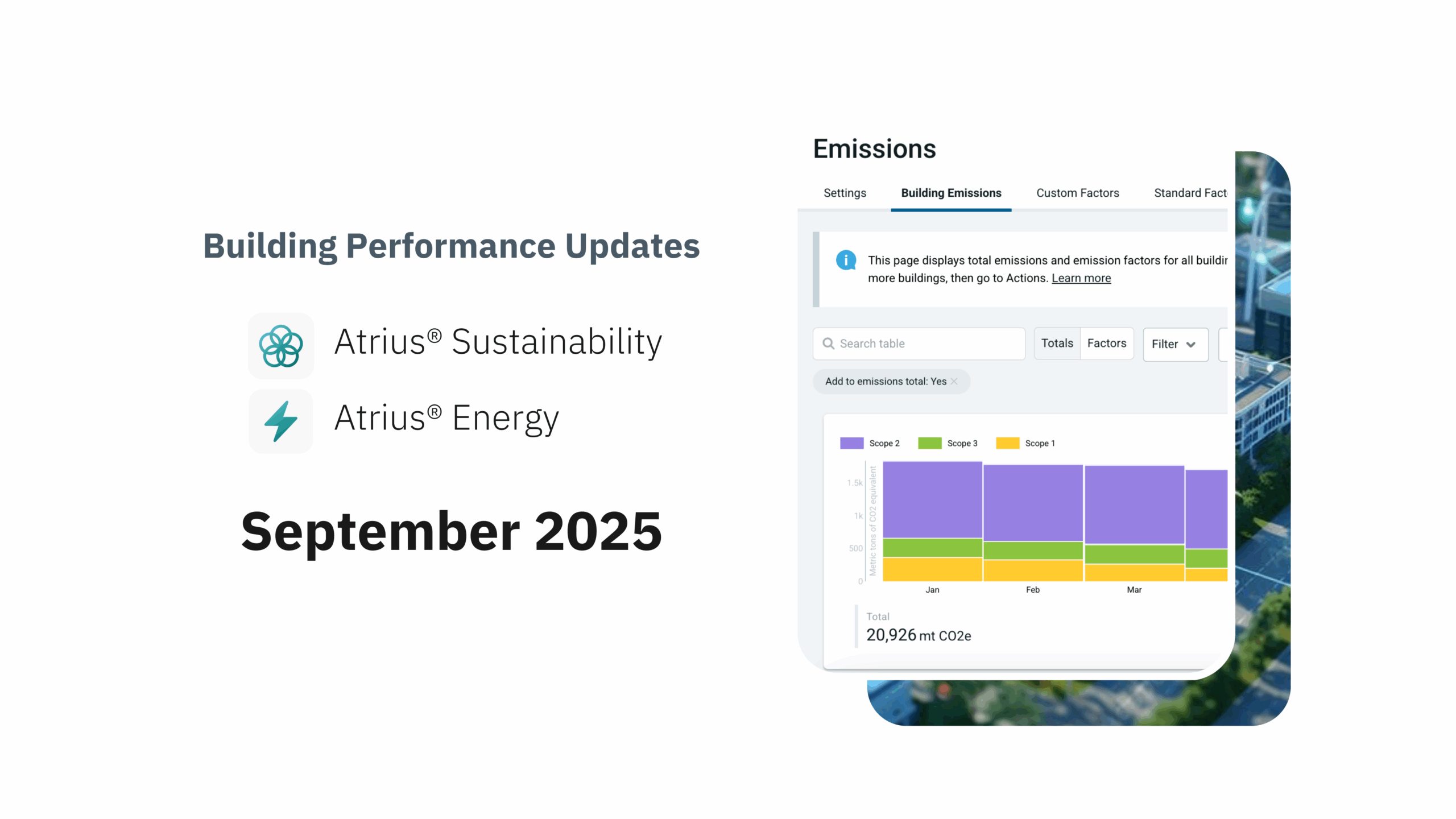This article was originally published by Engineered Systems.
The built space is undergoing a fundamental shift in how data is used to manage, measure, and elevate sustainability goals to all stakeholders. According to a United Nations Environment Programme report, buildings are responsible for almost 40% of global energy usage, 25% of global water usage, and 40% of global resource usage. The growing global efforts for decarbonization and increased awareness of the role built environments play in the health of our planet are driving a need for more visibility, transparency, and better access to data within the spaces we occupy.
Atrius recently published its 2022 State of Energy Management report, an annual survey of more than 600 energy management professionals across multiple sectors. The report collects respondents’ experiences over the past year and where they feel the energy management industry is headed. The report provides decision-makers across industries direct insights on how they can continue to improve their sustainability plans and meet ESG goals.
One of the report’s key findings this year is that while creating greener spaces is a priority for 77% of respondents, nearly half said that corporate resources fall short in terms of investment and staffing. For real progress to be made, organizations must close the gap between their sustainability goals and the investments they are actually making into solutions that will help teams create safer, greener spaces. Energy teams require realistic budgets and staff to meet these goals and the technological tools that show activity and progress.
The Need for Real-Time Data and Automation
Having an automated system that not only centralizes building data but acts in response to real-time resource consumption improves building and energy efficiency. Critical for an accurate representation of energy usage, automation allows facility managers and energy teams to work hand-in-hand to optimize usage during down or low-activity time. It’s not simply enough to reduce usage, but, instead, we need to think about long-term resource optimization strategies that meet the needs of the business happening within a space and the overall safety and comfort of occupants.
What do engineers need to consider as they make steps towards modernizing their infrastructure/resource management plans to leverage the latest technology? The State of Energy Management survey found that nearly 70% of respondents expect a greater need for HVAC control moving forward. This growing need is likely tied to the building operation disruptions, to an extent, brought on by the pandemic. Pre-pandemic, a regular flow of occupants and energy use could be predicted for every hour of the day. Teams that previously worked solely on-site must adapt to new technology that provides greater agility in their buildings systems to balance dynamic occupancy levels with system capabilities.
Executive Visibility and Transparency Are Critical
It was not that long ago that corporate sustainability was siloed into philanthropic initiatives, small line-items on a bigger yearly plan. Today, there are not only regulatory compliance requirements but also a proven shift in executive thinking. It has become common for executives to advocate for sustainability, as these efforts are increasingly tied to corporate financial goals, employee satisfaction, customer retention, and brand loyalty.
Despite this shift, 55% of the energy professionals from our research said they need better employee engagement and executive support to ensure goals for lowering buildings’ resource usage are met. Fortunately, new digital solutions make it easy to share reports and create dashboards that can engage employees and executives. Tools that can actively solicit stakeholder collaboration are key to meeting new environmental, social, and governance (ESG) goals. Over the next year, executives will have more incentives to provide these solutions to their energy teams. With new standards guiding transparency in ESG reporting, corporations are increasingly tying compensation metrics to meeting ESG goals.

Secure Dedicated Funding
The Atrius State of Energy Management survey found that 45% of surveyed energy professionals said their companies’ budgets for energy or sustainability initiatives do not align with organizational ESG goals. Creating a new line item dedicated to funding sustainability efforts can be an extra step, but increased executive visibility into building performance combined with an open dialogue about benefits make this easier. Interest in sustainable investing is growing as a US SIF Foundation report showed that ESG investing grew 42% to $17.1 trillion in recent years.
Even if teams get the budget they need, time is still a constraint. The Atrius State of Energy Management survey found that capacity and money remain the biggest barriers to implementing an energy management information system (EMIS). To gain executive buy-in for a data-rich EMIS, teams should consider shifting the conversation from the front-end financial investment of these solutions to the many long-term benefits these tools offer. Embracing solutions that remove the need for manual processes and checks, increases productivity for the teams already in place by allowing them to focus on goals and communicating progress.
ESG principles have increasingly become an integral part of corporate operations, but to be successful they require commitment at every level. More visibility and transparency in sustainability projects strengthens ongoing ESG strategy to all stakeholders. While energy and building performance data traditionally was only available through specific teams, we have an opportunity to share sustainability metrics with all stakeholders, giving everyone a chance to do their part in meeting goals. Broader visibility with automation and visualization technologies means that everyone has a part to play in creating a greener built environment.



